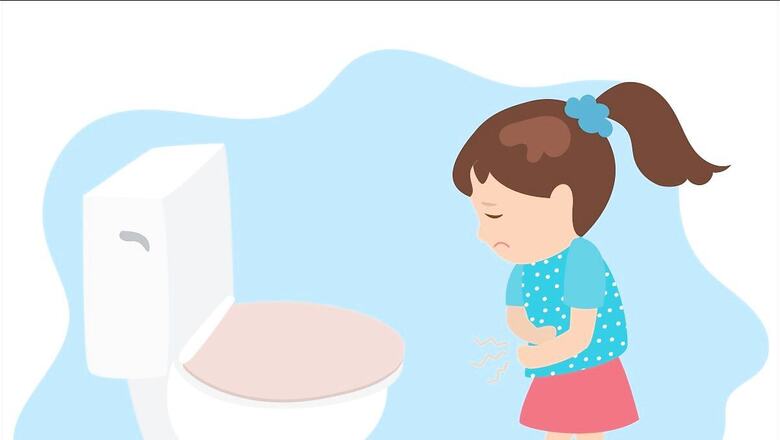
views
Ask any parent, and they’ll tell you that one of the most significant milestones in a child’s journey towards independence is when they master the task of taking themselves to the toilet, without help from their caregivers. It makes them feel incredibly grown up, and lays the foundation for the next steps towards self-sufficiency such as dressing themselves, brushing their teeth, and bathing, without the need for adult supervision.
Nevertheless, toilet training can be tough on both parents and children alike. Children need a loving hand, and plenty of repetition to get it right. Even when they begin to get the hang of it, there will be accidents and setbacks. Throughout this period, parents need to stay focused on the end goal: you want children to want to go to the toilet and adopt the right behaviours. Therefore, the less stress and punishment is involved, the better. Instead, look for ways to make these new habits easy and enjoyable.
When to Begin Toilet Training?
While starting early has several advantages, it can be counterproductive to start before the child is ready. So, the first step is to recognize the signs of readiness in your child. These include:
- Showing interest in the toilet or potty
- Being able to follow simple instructions
- Being able to communicate their needs and feelings
- Being able to pull their pants up and down
- Having regular and predictable bowel movements
- Staying dry for at least two hours at a time
- Expressing discomfort when wet or soiled
If your child shows most or all of these signs, they are likely ready to start toilet training. However, it is important to remember that every child is different and develops at their own pace. Some children may be ready as early as 18 months, while others may not be ready until they are three or four years old. There is no right or wrong age to start toilet training, as long as your child is willing and motivated.
The next step is to prepare your child for toilet training. This involves:
- Choosing a suitable toilet or potty that is comfortable, stable, and accessible for your child
- Providing your child with easy-to-remove clothing, such as elastic waistbands, skirts, or dresses
- Encouraging your child to drink plenty of fluids and eat high-fiber foods to prevent constipation
- Establishing a regular routine of taking your child to the toilet or potty every two to three hours, or when they show signs of needing to go
- Praising your child for sitting on the toilet or potty, even if they do not produce anything
- Reading books or watching videos about toilet training with your child
- Using positive and consistent language to talk about toilet training, such as “pee”, “poop”, “dry”, “wet”, etc.
- Avoiding negative or shaming language, such as “dirty”, “naughty”, “bad”, etc.
The third step is to support your child’s progress and confidence. This involves:
- Celebrating your child’s successes, such as staying dry, using the toilet or potty, washing their hands, etc.
- Offering rewards or incentives that are meaningful and motivating for your child, such as stickers, toys, books, etc.
- Being patient and understanding when accidents happen, which are normal and expected in the learning process
- Helping your child clean up and change clothes without making a fuss or blaming them
- Reminding your child to use the toilet or potty before leaving the house, before bedtime, or before any activity that may distract them
- Gradually reducing the amount of assistance and supervision you provide as your child becomes more independent and confident
The final step is to reinforce your child’s toilet independence. This involves:
- Encouraging your child to use the toilet or potty on their own when they feel the need
- Teaching your child how to clean themselves properly, flush the toilet, and wash their hands
- Providing your child with appropriate clothing that they can manage by themselves, such as easy buttons, zippers, snaps, etc.
- Helping your child cope with any challenges or setbacks that may arise, such as illness, travel, stress, etc.
- Continuing to praise and reward your child for their efforts and achievements
Expanding Toilet Hygiene into Schools
By the time the child is independently using the toilet, it’s time to go to school, playschool or kindergarten. This is where their toilet habits face the litmus test. It helps tremendously if the school also embraces a culture of toilet hygiene by talking to children about it. Further, the toilets need to be accessible – children of all sizes should be able to comfortably reach the toilet, use the bidet, reach the toilet paper, close the lid, flush, reach the sink, reach the tap and soap dispenser, and the hand dryer or hand towels. They should be able to open and close the toilet door with ease, and have the ability to freely go to the toilet when they need to.
The habits children build now, lay the foundation for future health and wellness. To this end, the more we communicate, and communicate in interesting and empathetic ways, the easier it gets for children to adopt these habits.
Harpic, India’s leading brand in the lavatory care segment, recognises this and has directed several outreach programs towards schools and school children. Harpic has also partnered with News18 in the Mission Swachhta aur Paani Initiative, which has, for 3 years now, championed the cause of inclusive sanitation, equality for all genders, abilities, castes and classes and the strong belief that clean toilets are a shared responsibility.
Under the aegis of Mission Swachhta aur Paani, Harpic partnered with Sesame Workshop India, an educational non-profit, to promote positive sanitation, hygiene knowledge and behaviours among children and families through schools and communities, engaging with 17.5 million children across India.
Mission Swachhta aur Paani also serves as a valuable information repository for parents. If there’s a topic related to toilet access and toilet hygiene you want to learn about, you’ll find it here. You can also leverage the information you find here to have the necessary conversations with your child’s school, playgroup and kindergarten, helping make it safer and more enjoyable for not just your own child, but everyone else’s too!
Join us, in your own way, in the steady march towards a Swachh and Swasth Bharat.




















Comments
0 comment